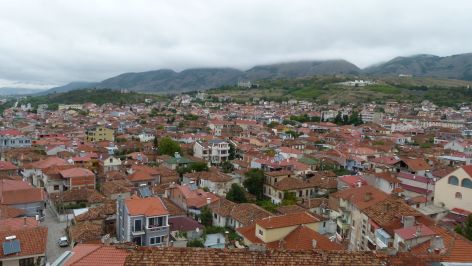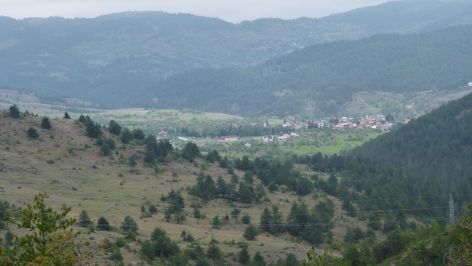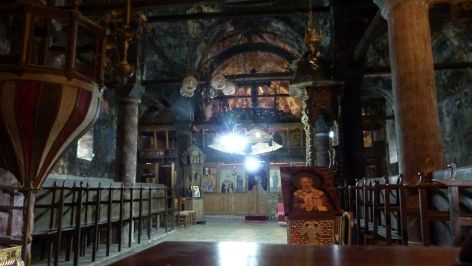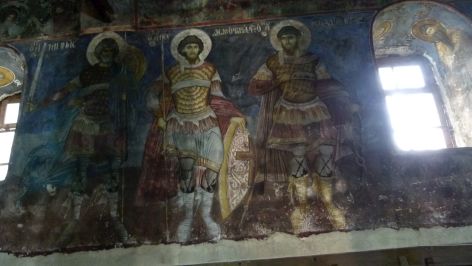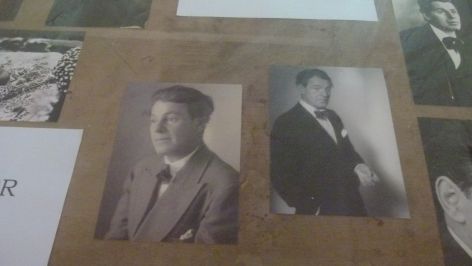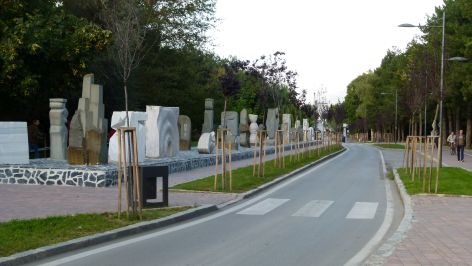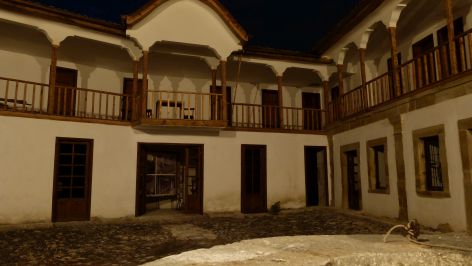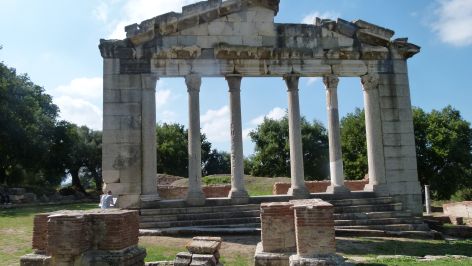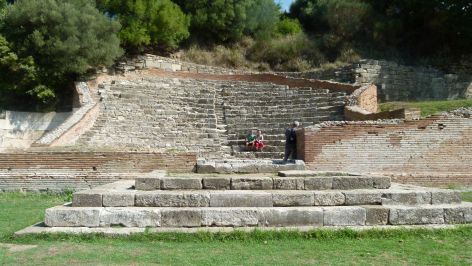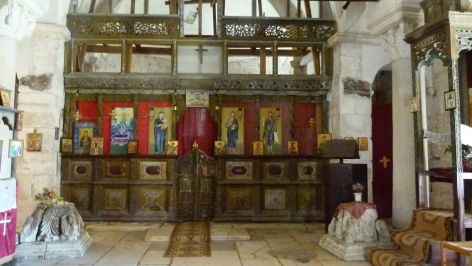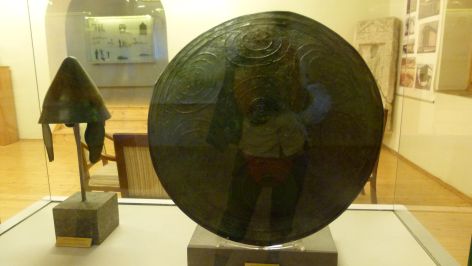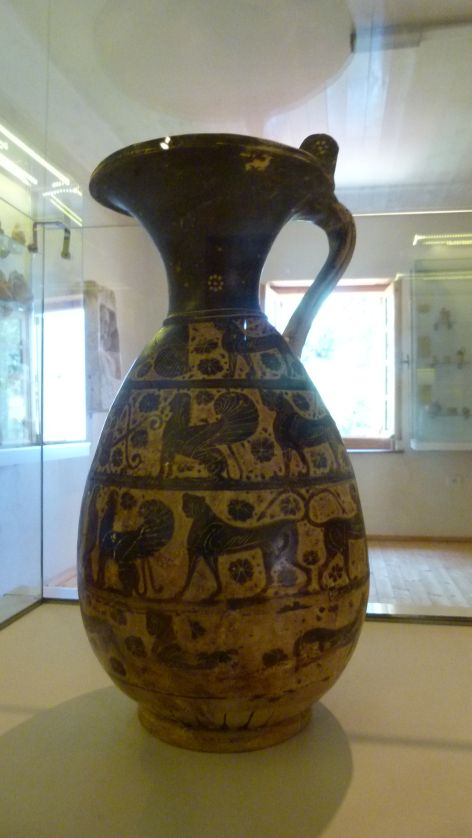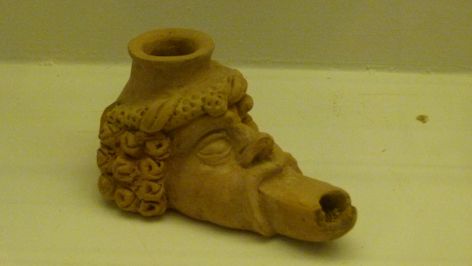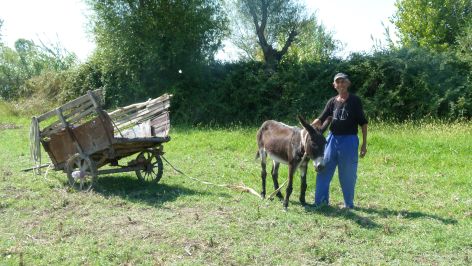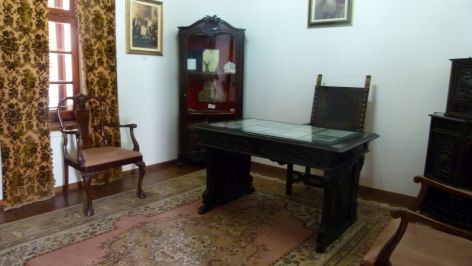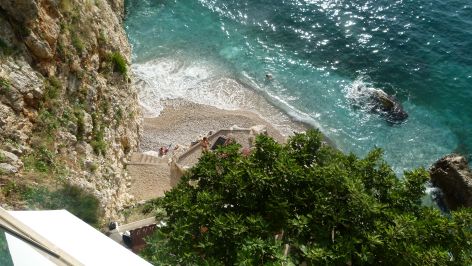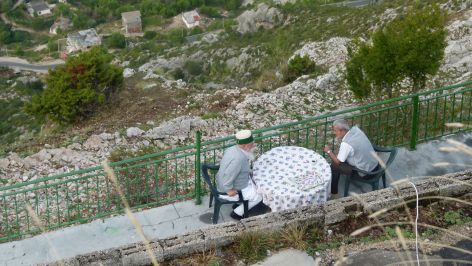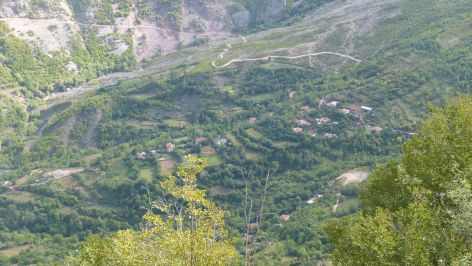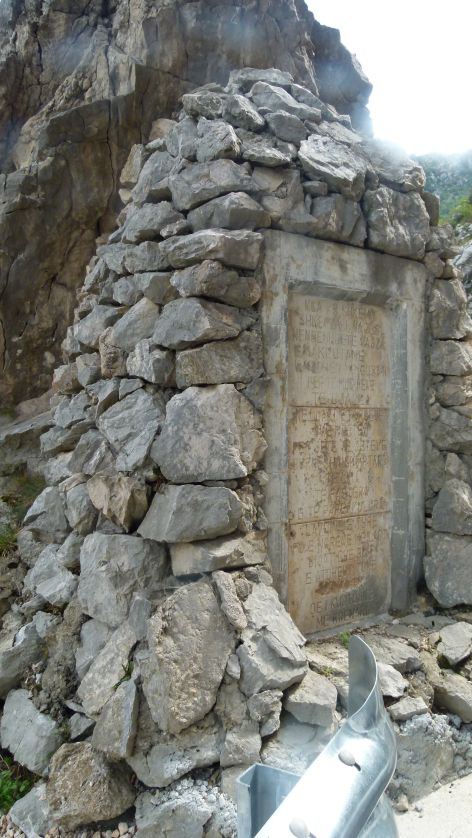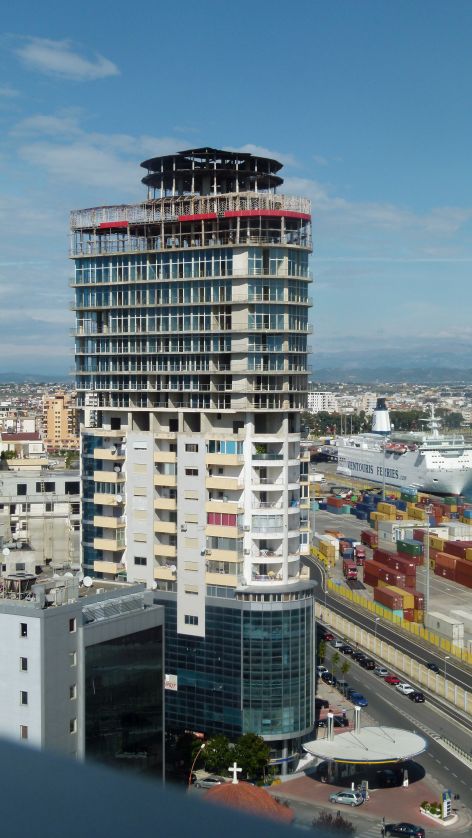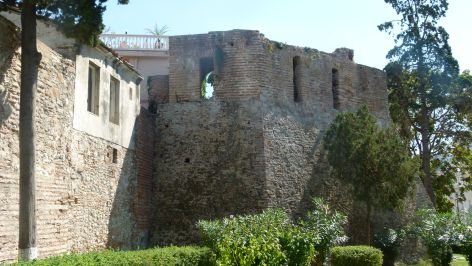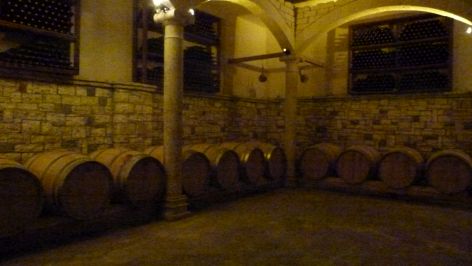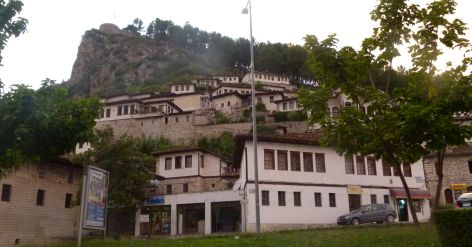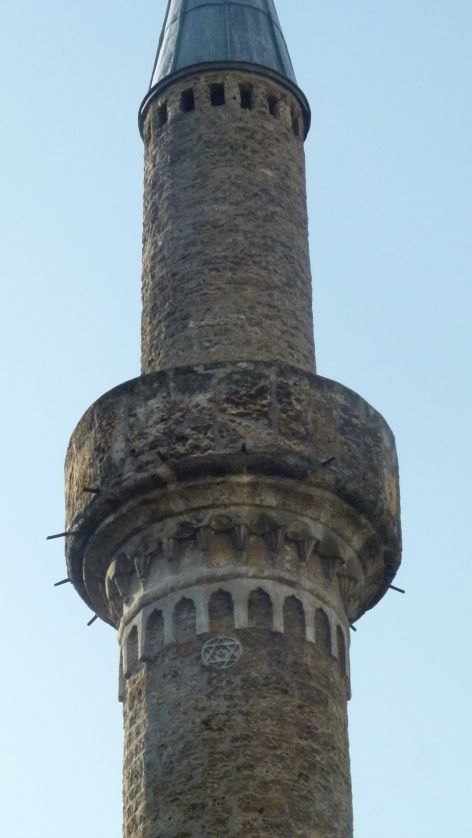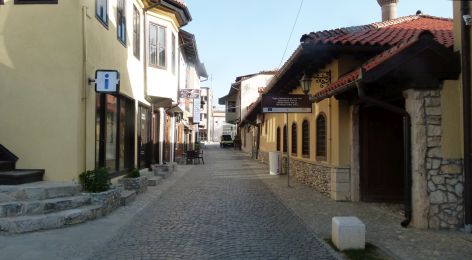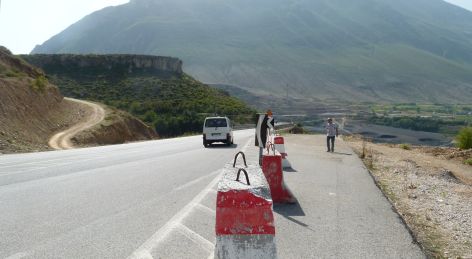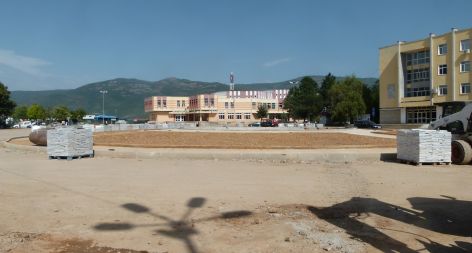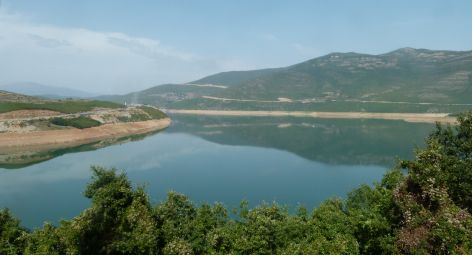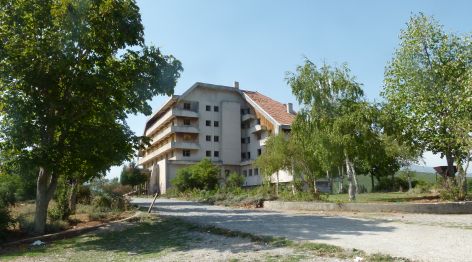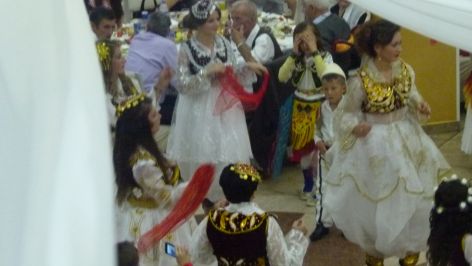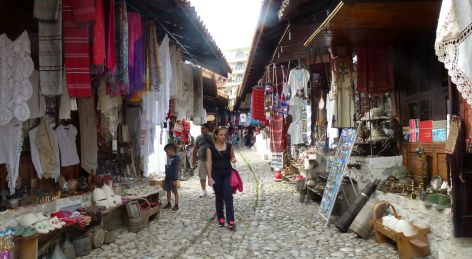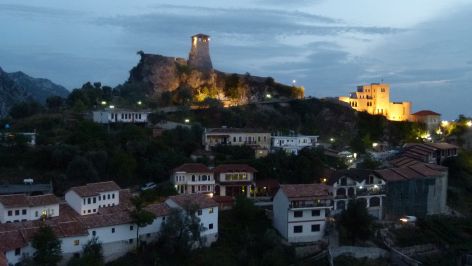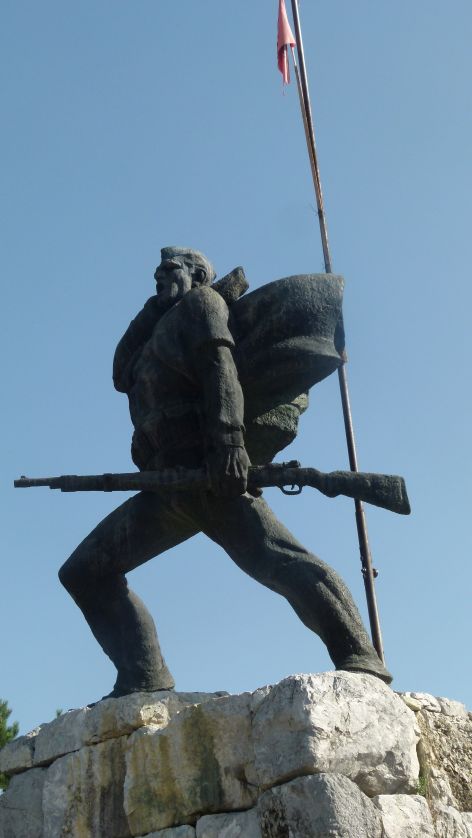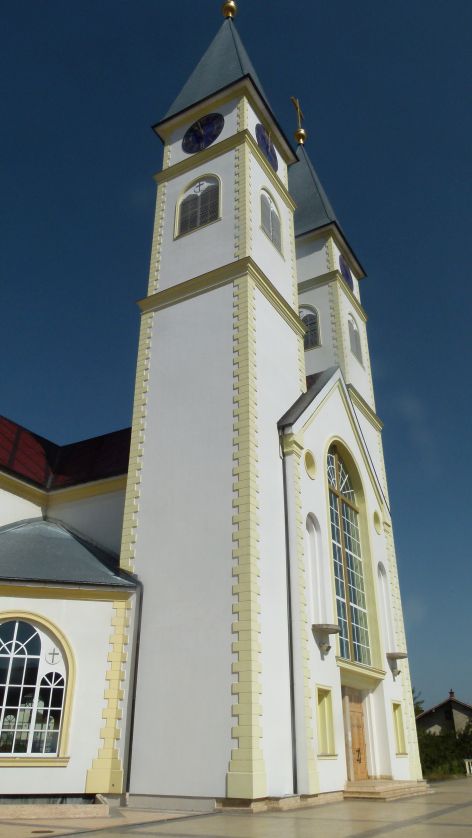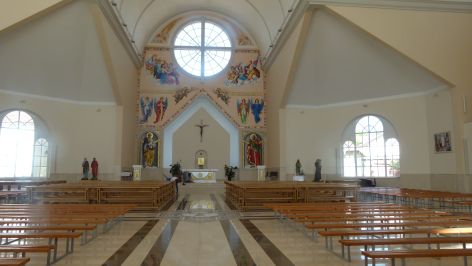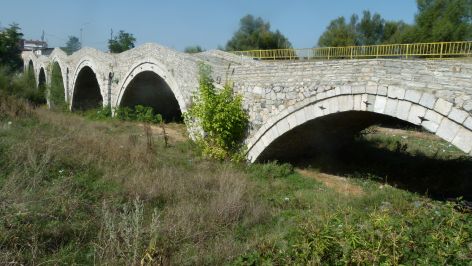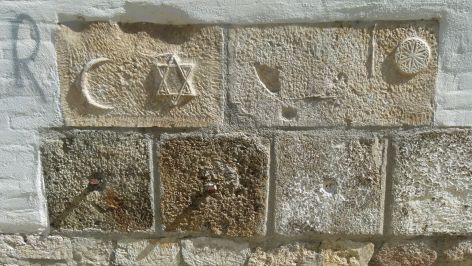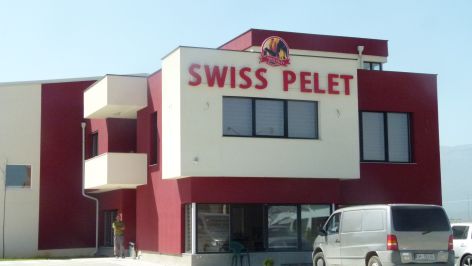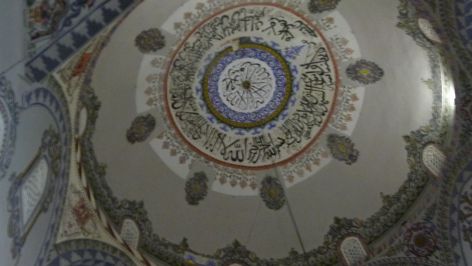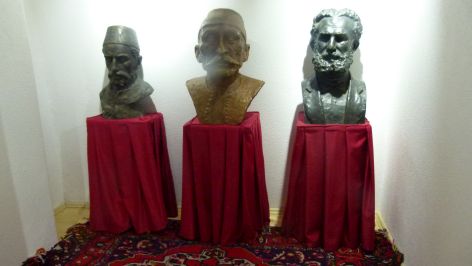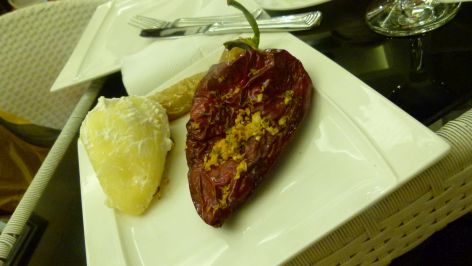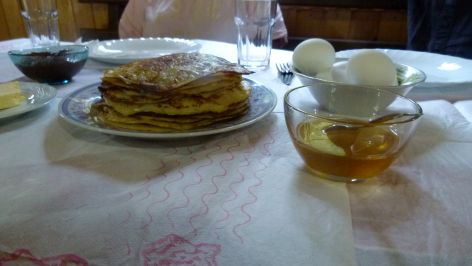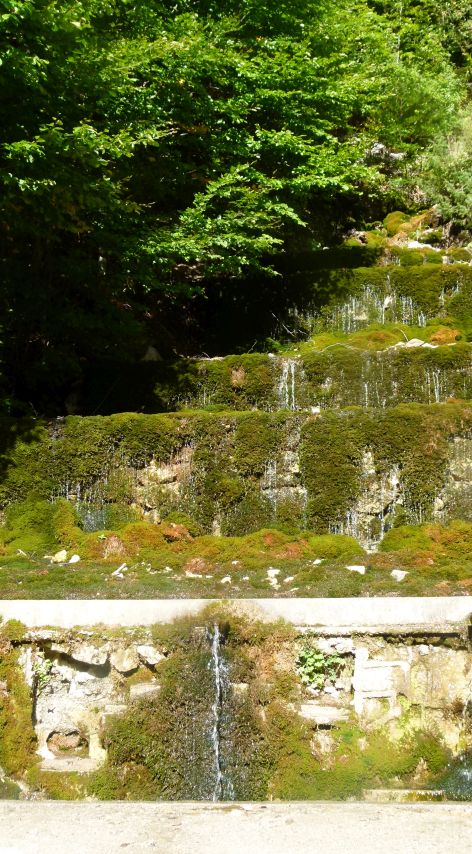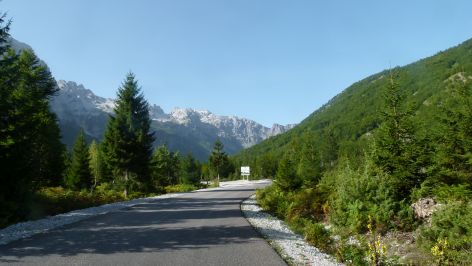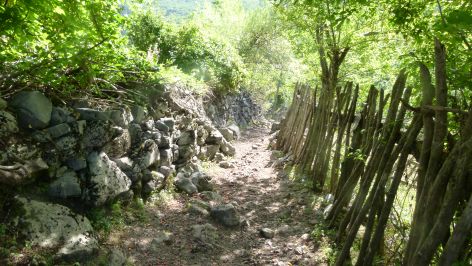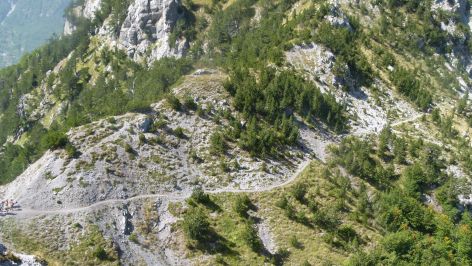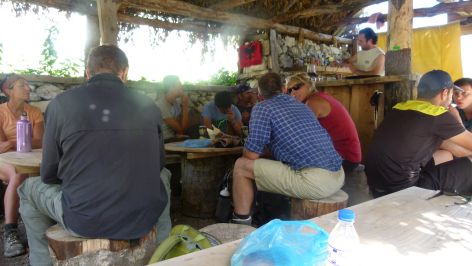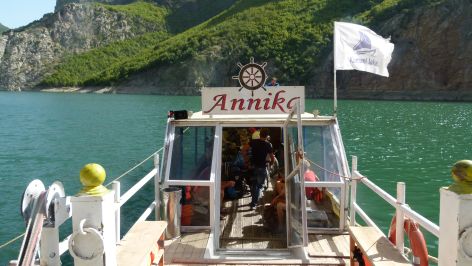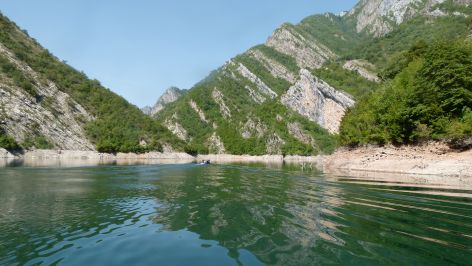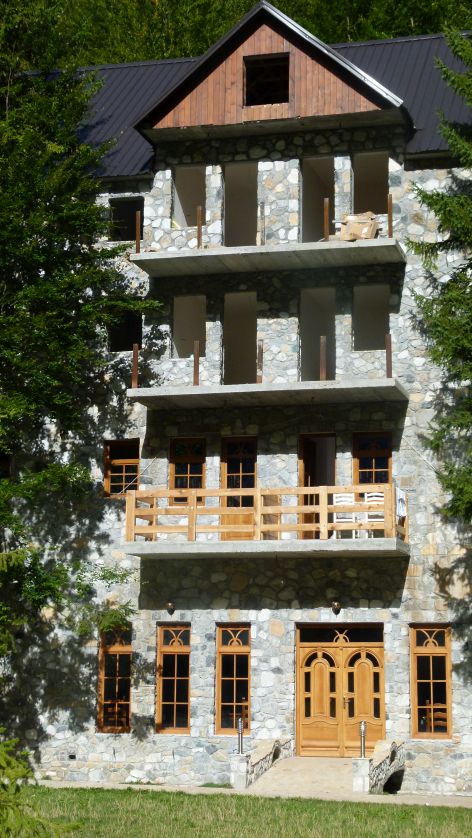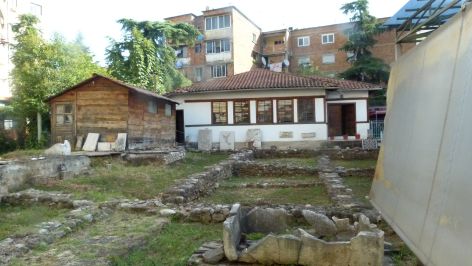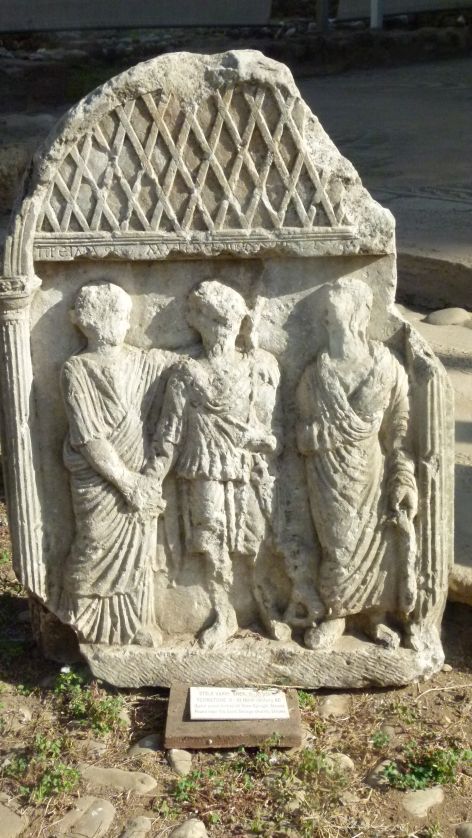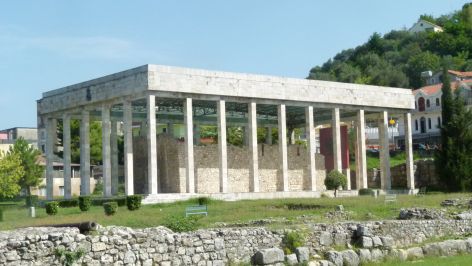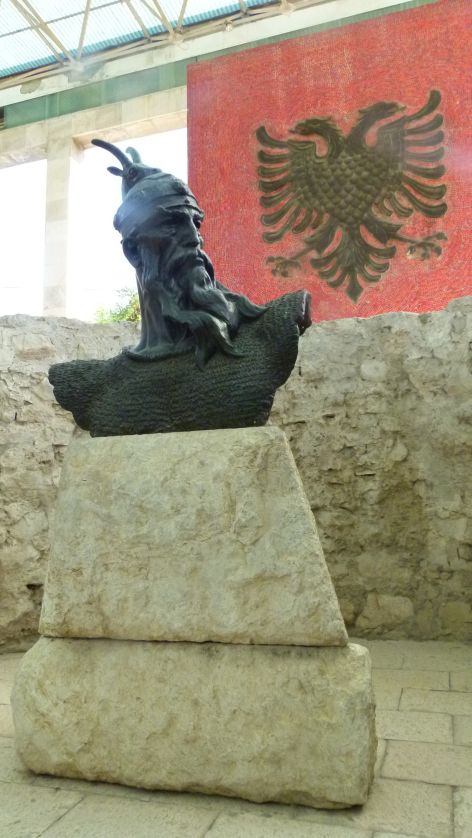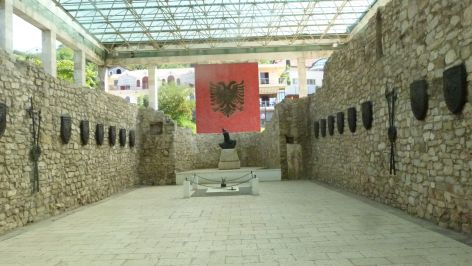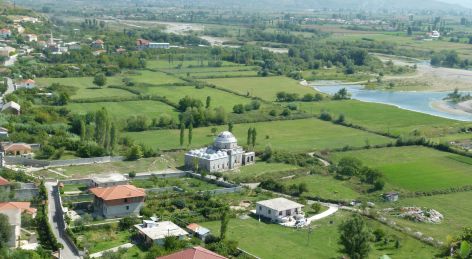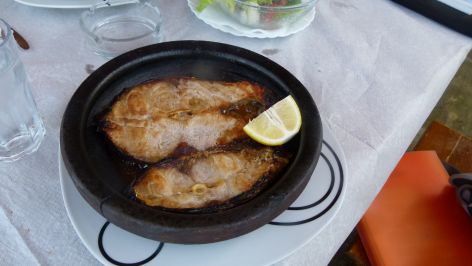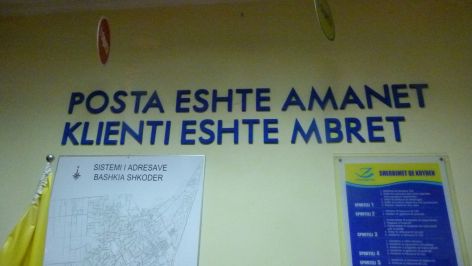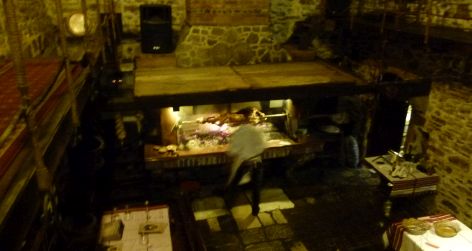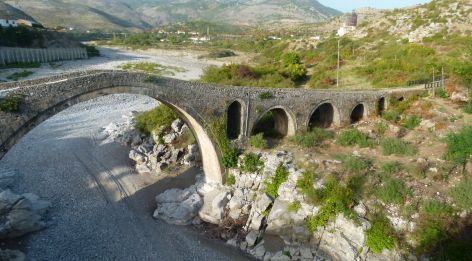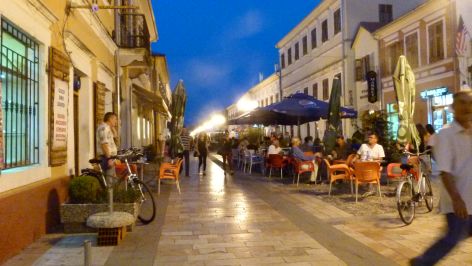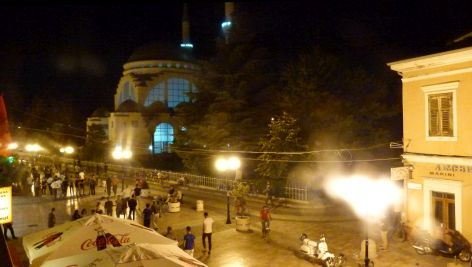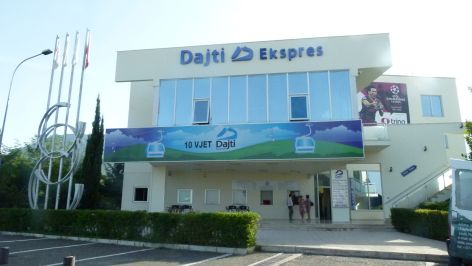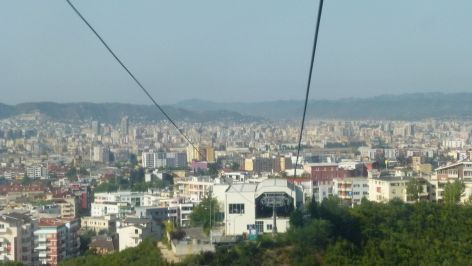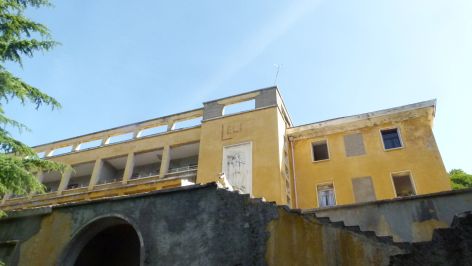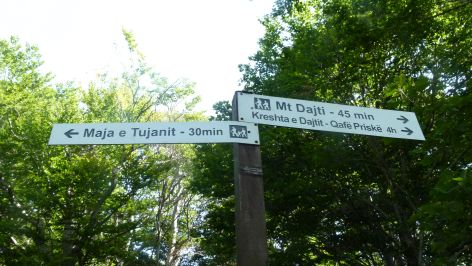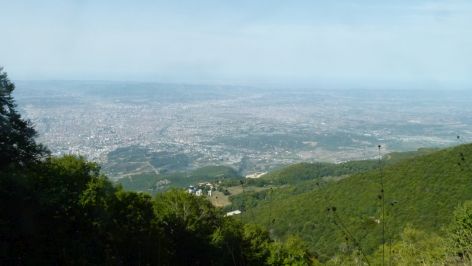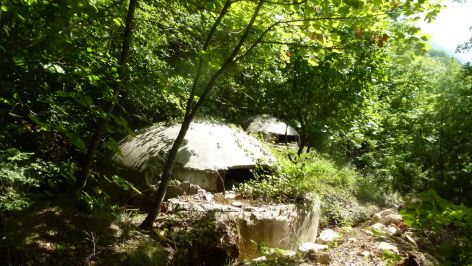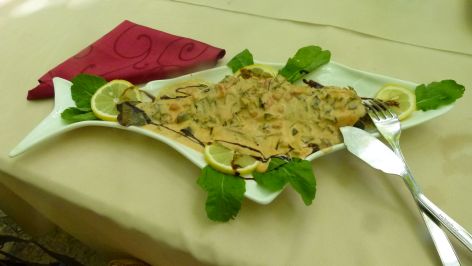Tower of Korça with view
In the morning, we climb the rectangular tower in the city center to get an overview of Korça, located on 850m above sea level and surrounded by hills.
Korça developed around 1800 after Voskopoja had decayed.
Next, we drive to Voskopaja that is located on about 1160m.
Walk around to Voskopoja
Located amidst soft hills, Voskopja was a cultural and economic center of the Ottoman empire in the 17th and 18th century. Around 1800 and then again in 1913 it was destroyed. It is a village now. This is the central square.
We walk to the neck of Pasha, a hill on about 1600m above Voskopaja. We first follow a romantic creek that has made the path muddy. We find boletus…
… and parasol mushrooms.
If I were here with my camper, I would prepare a delicious risotto.
We reach a mountain lake.
Sad. There was a restaurant and guest house here that had been built with much love for details such as a children’s playground and a fountain, but now it is decaying. The owner has given up.
Ever once in a while we have a view of Voskopaja.
„By my memory, there is a path here”, Ben says and turns right. Yes, there IS a tiny path here, I would have never seen it. It is good to hike with a guy from the mountains that just feels, where he has to go. Ben now starts to pick up rubbish on the way… he wants his country to be cleaner. After about three hours we are back in Voskopaja.
Restaurant Taverna of Voskopoja
We are hungry and the Taverna is the obvious choice. We order Lakror (a pie with spinach and tomato/oignon) and yoghurt from sheep milk.
Delicious… I will have to look for the recipe.
There is a group of Albanians that now start to switch on local music – very, very, very loud. They dance to the music and enjoy it. I am happy to see them happy, but it is just too loud for me. No coffee here, we leave as quickly as we can.
Church St. Nicolas with frescoes
The church of St. Nicolas is closed. Eventually we find the key… the wife of the orthodox priest has it. She opens the gate.
The church is beautiful with its frescoes.
Back to Korça and to museum of first school of Albania
Around 1880 the first school was founded in Albania. Korça has a museum for that. It is not open. Ben rings the bell and a young guy opens. He takes us around and adds insights to the explanations of Ben. I feel how proud both are that this school has defended teaching the Albanian language against all odds of suppression. The young guy working as a volunteer shows enthusiasm of the relicts that the museum has collected to illustrate the history. My highlight Is Alexander Moisiu, an Albanian actor who now is buried near Lugano in Switzerland.
We later share a coffee with the young Albanian man from the museum. He makes a great impression on me. He is disabled, cannot walk well, but each morning he gets up at six to climb a mountain and train his muscles. He knows so much about world history, why is he not a teacher?
The park and the market of Korça
Korça is working hard to embellish their town. They have completed one of the most beautiful parks of Albania…
… even with a free open-air fitness center.
They are also refurbishing their bazzaar. Work is going on everywhere, even at night. This is one of the edges that has been almost completed.
I ask Ben, whether the people who have lived here before, can still afford to rent the renovated shops and houses. A Roma comes across us. He tells us the sad story of his people. They have lived here before, have sold second hand clothing, but now they will have to leave the market area and do not know yet, where to rebuild their business.
A light dinner at the Taverna of Korça
We wrap up our day with a light dinner, lime soup and salad, at the Taverna of Korça. “No, kos (yoghourt), I cannot serve you kos”, the waitor says. Last night he has given us his own kos, though it is not on the menu. But today he would like to eat his dinner himself… Very kind.
